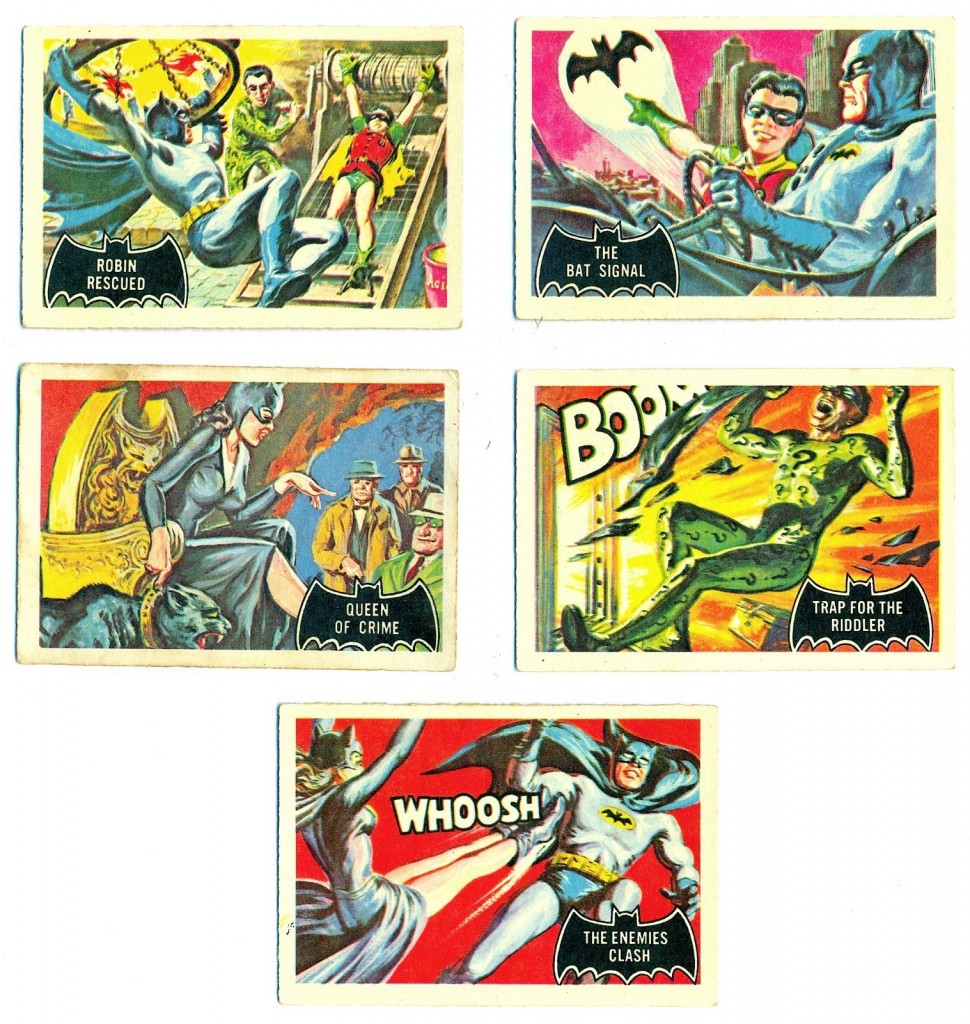55 Batman Cards…
It has only taken me 48 years to get the complete set of f Batman 1966 A&BC Chewing Gum Ltd cards but I am a happy man… I acquired the missing one today.
Each card is a full colour, hand-painted image by one of several contributing (comic book) artists including: Norm Saunders and Bob Powell.
Set of 55 Batman cards (British variant of Topps Batman set – Front is the same as US set, reverse has pink background with text.) Commonly known as “Pink Back Series” or “Black Bats”. UK cards smaller in size compared to the US Topps sets
